|
Home. What does that word conjure for you? I’ve been contemplating this word since we moved into a new house at the end of September. Merriam Webster is of no help. Their definition of home is “one’s place of residence; a social unit formed by a family living together; a familiar or usual setting.” While these definitions are true, the word home as I see it, is more complex.
There are many ways to feel at home, but for the purpose of this blog, I’m going to to focus on three: your community, your physical residence, and with yourself. Optimally, we’re at home at all these levels. What type of community feels like home to you? For over 20 years I lived in the Raleigh/Durham/Chapel Hill area of North Carolina and enjoyed it immensely, but the connection was not strong enough for it to be home in the fullest sense of the word. In contrast, after our first weekend visit to Oriental, I knew this was home. Like Adelaide in Calling the Circle, “being here feels like finding the piece of a puzzle you’ve been searching for and pressing it into place.” My connection to Oriental was deep and immediate and at that point mostly based on intuition and the pull of the water. Now that I’ve lived here, I can say Oriental is home because of the beautiful natural surroundings, the slower pace of life, the creative, spiritual and kind people, and because I rarely have to dress in anything that doesn’t go with flip flops. What makes your residence feel like home? In the best circumstances, home is a place you feel safe, peaceful, and loved, a sanctuary from the stressors of life. The physical surroundings contribute to the feeling of home, the amount of space, the light, how you chose to decorate. An heirloom dining room set, the morning light in my writing space, pine, oak and sweet gum trees in the backyard, and sitting on the screened porch with my husband and cat, all make my new house feel like home. Your community and residence may contain all you need to make it home, but if you’re not at home within yourself, there’s a restlessness and disconnection that no change in the external environment can fix. So, how do you know when you’re at home with yourself? You express rather than repress. In childhood you may have been taught to repress parts of yourself like anger, sadness, creativity, and individuality. Later in life you may also stifle who you are after a trauma or trying to make a relationship work. It’s difficult to feel at home when parts of your authentic self are scattered across your life. To feel at home, you must claim these lost parts by noticing your emotions, opinions and desires, and expressing them in a healthy way. This is a complex process that requires mindfulness, self awareness, solitude for journaling and meditation, and time with a trusted friend/counselor/family member. A good way to reconnect with yourself is to take time alone, preferably several days. With no-one else to consider, where do you choose to go? How do you spend your time? What are you feeling? Notice when something comes to mind and you immediately discount it as not realistic, silly, a waste of time. This is how we repress. Telling ourselves we shouldn’t feel whatever emotion we’re experiencing is a common way we repress our feelings. I often hear clients say, “I shouldn’t be mad; I shouldn’t be sad because others have it worse,” etc. Be aware of this tendency, and allow yourself to feel whatever emotion arises without judgement. I encourage you to take small steps to follow through on your emotions or desires and see how it feels. If you feel more alive, you’re headed in the right direction. In a previous blog I’ve discussed this, but for me, creativity was something I’d repressed. Until I allowed myself to devote time to writing, I felt unsettled and that something was missing in my life. John O’Donohue says that restlessness is the expression of desire and I found this to be true. When I put time and energy into my desire to create, my restlessness diminished. You accept rather than ignore. It’s human nature to ignore negative traits, because let’s be honest, who really wants to go there? But to feel at home with yourself, you must acknowledge and accept the less attractive parts so they don’t subconsciously manifest. For example, because of anxiety, I want to control things. This often results in me telling my husband what to do, which does not contribute to a harmonious relationship. Now that I’m aware of this negative trait, I notice the desire to direct him, remind myself I don’t need to control everything for things to turn out well, and I stay quiet, most of the time. As a result, I’m being the person I want to be and am at peace, which is a component of feeling at home. When there is dissonance between who you are and who you want to be, it’s difficult be home. Other’s opinions carry less weight. If you’re authentically expressing your values, interests, and emotions, then other’s critiques are not as important. If someone from New York City came to my physical home and gave me ten reasons why they didn’t like it, it wouldn’t upset me. In fact I would smile to myself and think, they just don’t know what they’re missing. So, if someone critiques who you are when you’re fully at home with yourself, you should feel the same way, that they just don’t know what they’re missing:) You don’t compare yourself to others. When you’re at home with yourself, you don’t feel jealous or resentful of how others are living their lives, because you’re content with your choices. You may occasionally be envious of someone, but hopefully use this as inspiration to make changes in your life, rather than proof they are better than you. You feel safe to explore who you are and to make mistakes. You are not a static being. Who you are may shift and change with age and experience. It feels safe to try something new when you have a stable home base to return to. When you’re free to take risks, and fail without self criticism, then you are home. With the winter solstice a month away, the shorter days and longer nights provide an excellent opportunity for introspection, and to assess if you’re living authentically. I encourage you to make small changes to feel more at home with yourself, thus creating the foundation for building a community and residence that truly reflects who you are. As I write this blog, I’m aware of the millions of people around the world that don’t have the privilege of choosing their community and residence, much less the time and safety to journal, seek council or reflect deeply on their emotions and desires. The UN refugee agency reports that right now, 108.4 million people around the world are forcibly displaced, and this doesn’t include homeless populations due to poverty, mental health, substance abuse. I’m sharing this not to generate guilt, but to create awareness of the choices we may take for granted. It’s our responsibility to live the lives we’re given with authenticity and gratitude. If we cannot create home for ourselves, how can we help others around the world do the same? The concept of home is fascinating because the specifics are diverse and unique to each individual. I’d love to continue this discussion and hear from you. Please share in the comments what feels like home to you.
2 Comments
My first novel, Hungry Mother Creek, was published in March eight years ago. This anniversary has passed seven times without much thought, but the number eight caught my attention. I reflected on my life before and after Hungry Mother Creek was published, and was overcome with gratitude for my younger self, who followed her inspiration to start writing fifteen years ago, and then was brave enough to share her work with the world eight years ago.
I tried to imagine my life without writing and publishing my novels, and it felt empty. For a brief moment I grieved all I would have lost, and the intensity of my feelings surprised me. Being a writer and published author has allowed me to grow personally, tap into my creativity and develop meaningful relationships. It’s also quelled the restlessness that had been a part of my life since college. Despite having meaningful jobs, enjoyable hobbies and positive relationships, I felt there had to be more to life. John O’Donohue says that restlessness is the expression of desire, and although I didn’t consciously know it when I began to write, my intuition knew I had a desire to express my creativity. On this journey I’ve learned to follow my intuition and ignore the negative self talk. The inner voice telling me to write was quiet but consistent, while the inner bully, telling me I wasn’t good enough or smart enough to write a book, was boisterous. The negative thoughts distracted me, especially at the start, but over time I learned to realign with the voice urging me along, and thank goodness I did that. Despite what my inner bully said, I’ve now written two books that have been positively received by readers and book clubs, and have won awards. Following my intuition turned out to be the correct thing to do and has given me courage to more consistently follow my inner voice and create a unique life that’s my own. We all have an inner bully, and it pretty much says the same thing, so listening to that voice keeps our lives small and conforming. It’s when we listen to the quiet, consistent inner voice urging us outside our comfort zone, that we tap into the authentic gifts we were meant to share. My negative self talk is still there, but now I acknowledge this as part of the process of moving outside my comfort zone, and not a reason to stop my efforts. Dedicating consistent time and energy to writing has provided an outlet for my creativity, something I’d rarely nurtured earlier in my life. My creativity needed expression, and keeping it bottled up fed my restlessness. Now my creative life is a priority and I feel more content that I’m fulfilling part of my life’s purpose. I don’t have visions of grandeur that my writing will create seismic shifts in the world, but it feels good to be doing my part. Bill Plotkin says it best. “The gift you can carry for others is not an attempt to save the world, but to fully belong to it. It’s not possible to save the world by trying to save it. You need to find what is genuinely yours to offer the world before you can make it a better place.” Do you ever feel restless? That you were meant to contribute and experience more in the world? These feelings are natural, a part of the human condition, and only become toxic when we ignore them. Based on my experiences, curing restlessness and discontent begins with listening to our intuition. Intuition is a form of knowledge that appears in our consciousness without obvious deliberation, and we must pay attention to be aware of it. Often our mind is filled with our negative self talk, the demands of others, or we are consuming media that drowns out our intuition. Going for a quiet walk, meditating, eating a meal in silence, and journaling are all ways to create space to hear our intuition. Often all we have to do is ask, and then pay attention to the first thing that comes into our minds. Recently a client was struggling emotionally and I asked her what the best, most loving version of herself would say to her in that moment. She hesitated for a few seconds and then said, “I am somebody.” That was her intuition, or higher self, overriding her negative self talk and all it took was a question and some quiet reflection. Now this is her mantra. Be aware that our intuition gives us assignments that feel difficult, like believing we are somebody, or writing a book, but that’s just our negative self talk. What’s difficult is living an unfulfilled life. So, take a breath, turn off the pod cast, step outside and listen to that quiet voice within……. “A life that continues to remain on the safe side of its own habits and repetitions, that never engages with the risk of its own possibility, remains an unlived life. There is within each heart a hidden voice that calls out for freedom and creativity.” John O’Donohue, “To Bless the Space Between Us”  Finding the right words is a common thread running through my work as a counselor and author. In my counseling practice, I must find the right words to empathize, inspire, and sometimes challenge, while also helping my clients find the words to express their feelings. As an author, my word choice must be specific, and descriptive, so the reader can see and feel what my characters do. With all this wordsmithing, both verbal and written, you’d think I could easily find words for simple, personal conversations. Most of the time I can, but this was not the case when I returned from a month of camping and hiking in Colorado, Utah and New Mexico. Interested friends and family immediately asked “How was your trip?” I was unable to express how this experience impacted me. The one word that came to mind, awesome, didn’t feel adequate for the occasion. It’s overused and didn’t seem appropriate for the magnificence I’d observed on our trek through six national parks, one state park, three national forests, two national monuments and one Navaho tribal park. I looked up the definition of awe, which, according to Merriam-Webster, is “an emotion variously combining dread, veneration, or wonder, inspired by authority, or by the sacred or sublime.” Being in the presence of mountains, aspen trees, hot springs, canyons, arches, natural bridges, water pocket folds, hoo doos, and sand dunes filled me with veneration for their sublime beauty. I had been full of awe on my trip, so why didn’t awesome feel like the best word? Most likely because our culture, myself included, have misused this word since the 1980’s when everything was totally awesome. After coordinating a coffee date I’ve said, “Awesome. See you tomorrow morning,” or when my 5 pm client cancels I may say to myself, “Awesome. I can go home early.” These scenarios do not fill me with wonder. They are not sacred or sublime. They may be good, fantastic, excellent, but not awesome. I can’t change how others use this word, but I will be mindful of saving it for the transcendent, and not the mundane. My struggle to find the right word was a reminder that the misuse of a word, or the lack of adequate vocabulary, interferes with my ability to communicate my experience to others so they understand me. I confront this in my counseling practice as well. With little emphasis on building emotional vocabulary in our culture, most clients initially use vague and overused words to describe their symptoms like bad, sad, angry, tired, stressed, and depressed. Some even say they feel “some kind of way,” which refers to a negative emotional state. It’s hard to get anywhere without the right words. Though reflective listening and a list of feeling words, angry becomes resentful, tired becomes bored, sad becomes hopeless, depressed becomes unappreciated and “some kind of way,” becomes jealous. Once my clients’ emotions are labeled with accurate and specific words, we identify the most appropriate intervention to help them cope. This is a small, but imperative step in the counseling process that allows me, and the client, to better understand their emotional experience. Whether we use a counseling session, journaling, or a list of feeling words, labeling our feelings with the right word is a skill we all need. It increases self understanding and empowers us to better manage our emotions. So the next time you’re feeling some kind of way, challenge yourself to find a more specific feeling word, and the next time you go to a national park, have an awesome time! Last weekend I heard live music and danced with my husband somewhere other than our living room, for the first time in 14 months. My weekends are filling up with out of town trips to visit family and friends, reunions I’ve anticipated since last summer. With vaccinations, relaxed COVID restrictions and a decrease in COVID cases, things kinda, sorta, feel normal.
These developments are good. What I’ve been dreaming of since last Spring. So why do I feel overwhelmed with my burgeoning calendar? Shouldn’t I be thrilled to jump back into life, doing everything and seeing everyone that’s been off limits the past year? I reflected on these questions, and garnered several insights to help me mindfully navigate the reopening of our country. I hope they may resonate with you as well. Give yourself and others grace. We should always do this, but especially now. There’s no universal way to re-enter after over a year of COVID restrictions, but if we pay attention, we can discern the right way for us. Don’t be surprised if you’re experiencing fatigue, mood swings and possibly anxiety, after successfully enduring the worst of the pandemic. These are symptoms of the exhaustion phase of the stress cycle, which occurs after coping with a long term stressor. Often when the stressor is removed, or significantly decreases, the body and mind release their struggle, and we tumble into exhaustion. If you’re fatigued, and less jubilant than you expected about the return to normalcy, don’t judge yourself, apply self compassion. Make choices that feel good for you. Focus on the basics of self care, plenty of sleep, regular exercise, healthy food, engaging in meaningful spiritual practices and spending time with loving people. Have grace with those around you, and don’t judge their choices. Although we’ve all lived through the pandemic of 2020, each of our experiences were unique. Some had COVID. Some lost loved ones to COVID. Some relished the quiet. Others were climbing the walls. Some lost jobs and financial security, while others saw their businesses thrive. Honor what’s best for your well being, while respecting that others will do things differently. Assess your priorities. A potentially life threatening situation, combined with more time to reflect, often crystallizes our priorities. Your health, and the health of loved ones most likely topped your priority list, but what other areas became more valuable during the pandemic? Nurturing relationships? Time in Nature? More flexible work schedules? Playing with your children? What activities were you mourning while staying at home? Which ones were you relived to be rid of? Make a list of your top 5 priorities, and use this as a guide as you resume more normal life. Do your best to ensure that where you spend your time reflects your priorities. Personally, I found that solitude and writing time is a priority I haven’t honored enough in the past. I find it difficult to say no to invitations and to create time alone, which I often use to write. During the pandemic, I thrived with fewer evening and weekend commitments, and made substantial progress on my third novel. Now as my calendar fills up, I feel frustrated that my writing time is diminished. My focus, as I re-enter, will be to balance my priority of solitude and writing, with my priority of maintaining meaningful relationships. Incorporate new strengths into your life. The pandemic of 2020 was an unprecedented event, and required us to adapt to manage these new circumstances. Reflect on how you adjusted to the changes. What strengths rose to the surface that you were unaware of? Did you become more adept at using your computer? Did you access your creativity to keep yourself or your family entertained? Did your compassion for others deepen? Did you create more self discipline while working from home? Once you identify a previously untapped strength, look for ways to nurture this as life resumes a more normal flow. If you’re having trouble identifying strengths, I recommend the VIA Survey of Character Strengths (click on questionnaires and chose this one). The pandemic forced me to be more flexible than I’m comfortable with. I like a plan, and a routine because it keeps me in control, or so I thought. After transferring my counseling practice from in person to virtual in two days, I realized I can do things differently, without much planning, and still have control. I’d contemplated doing tele health from home one day a week, for almost 6 months prior to the pandemic, but never made it happen because of the what ifs; what if I couldn’t figure it out; what if no clients wanted tele therapy and so on. When I was forced to make this change, things were stressful for a short period of time, but I did it successfully. Even though more clients have returned to in-person counseling, I’ve continued to work one day a week from home, doing tele-health. Flexibility is a strength I’m going to emphasize as life re-opens. When something doesn’t work out as planned, I’ll focus on a new approach given the circumstances, rather than lamenting the disruption to my routine. I challenge you to intentionally re-enter life this summer, giving yourself and others grace, spending time based on your priorities, and utilizing a strength you exhibited during the pandemic. None of us chose to spend 2020 like we did, but we can mine our experience for knowledge that will improve the quality of our lives. When I began to focus on my spiritual and emotional growth 25 years ago, I soon realized that a barrier to achieving the life I wanted, was feeling unworthy. On my path I’ve been to counseling, read countless books, journaled, meditated, had silent retreats and been part of a women’s circle. The cumulative effect of my regular spiritual practices, and especially the influence of positive women mentors, has given me tools to manage my sense of unworthiness.
Being fed up, was not a step on any spiritual path I’d studied, but in retrospect, it was the first indication I was improving in this area. I became fed up with intimate relationships that drained my energy instead of filling me up; fed up with worrying about money; fed up with thinking about my weight all the time. Maybe we begin to feel worthy when we no longer accept the negativity in our life, and realize we have the power to change it. Once I felt this way, I made a decision to release some of the negative patterns in my life. This required changes in my outer and inner worlds. I had to release the thoughts that “I’m not lovable”; “I never have enough money”; “My body is ugly and undesirable”. Well, release is probably not the best word, because these thoughts occasionally still occur, but I definitely give them less attention. At the same time I made changes in my outer world, like ending an unhealthy relationship, making smart decisions with budgeting and investments, and making healthy, moderate choices with my diet and exercise. When I let go of what wasn’t serving my highest good, I created an opening, so the things I desired could enter my life. * I’d like to say I’ve recovered from unworthiness, but that’s not the case. I am more adept though, at identifying when it’s interfering with my life. I recently dealt with this at a two day training for Reiki. While doing yoga the morning after my first day, I began to cry. I was being taught an ancient and powerful way to heal myself and others, and I felt unworthy of this power. Who was I to have access to this healing energy? Surely I wasn’t good enough, spiritual enough, intuitive enough. In triangle pose. an epiphany came to me. I don’t have to be worthy. I have to be open. This made perfect sense. For Reiki to work, I need to be a clear channel for the healing energy. Focusing on my inadequacies only hinders its flow and my ability to help others. I went to the second day of class with this perspective and felt the energy more intensely, both in my meditations and when practicing Reiki on my classmate. Being open, not worthy, is a succinct way of describing how I released unworthiness in the past. Nothing changed in my bank account or mirror once I began to feel more worthy. The positive changes occurred when I released the ridiculous standards I’d set for myself and was open to the good that was always there in my life. What I wanted was there all the time. What I wanted was there all the time! Even healthy, unconditional love, as that had to start within me before I could manifest it in a relationship. I know these revelations are not new, and I read about them at some point in the past 25 years, but now I understand them with my whole being and not just my intellect. I don’t have the ultimate step by step guide to help you overcome unworthiness and open to what you want in life, but I can share what helps me.
More than ever, we need to heal ourselves, so we can turn our energy outward, and do our part to heal the world. *I have distilled years of work into several sentences. Each of these topics improved at different times in my life, not all at once.* Occasionally I notice themes in the challenges my clients have, like negative core beliefs, unworthiness, or the desire to make everyone happy. I’ve come to realize that my attention to these themes is less about a mental health trend, and more about an area of growth needed in my emotional life.
Last week, what captured my focus was how critical my clients were of their feelings. One felt she shouldn’t be angry about having an autoimmune disease, because she had many other things to be grateful for. Another, with both lung and heart disease, felt weak, because she had anxiety about continuing her work as a clerk at Target and another, grieving the death of her mother in February, felt she wasn’t progressing through her grief fast enough. I validated their core feelings and pointed out that their self criticism was adding to their emotional load and distracting them from dealing with their anger, anxiety and grief. I reminded them that their goal is to pay attention to their emotions and cope with them in a healthy way, and not waste time judging how they feel. The week progressed and I noticed more negative feelings in myself, like irritability and sadness. I couldn’t ignore them any longer when, at the start of the weekend, I burst into tears over something very minor. My heart was breaking, but I knew intellectually what triggered my tears was not something worthy of this response. After a few minutes of crying and feeling sorry for myself, I paid attention to my thoughts. “I need to get over this,” “I have so much to be grateful for. I shouldn’t be sad,” and “I need to pull it together. I’m a mental health professional.” I was doing the same thing my clients were. I was sad, and my immediate response was to beat myself up about how I was feeling. Once I identified my self criticism, I grabbed my journal to figure out the core issues beneath my sadness. Through my writing, I identified that I was overwhelmed with my clients’ suffering, and questioning my ability to make a meaningful difference in their lives. These are hallmark symptoms of burnout. Now I had something to work with, and before I began criticizing my burnout, I immediately focused on self compassion. Kristin Neff, a researcher on self compassion, says that, “Instead of mercilessly judging and criticizing yourself for various inadequacies or shortcomings, self-compassion means you are kind and understanding when confronted with personal failings.” Self compassion doesn’t come naturally to most of us, and to help myself along, I talked to myself in the manner I knew my kindest friend would. I’d been working hard the last 2 months providing support and comfort to others, while also experiencing the pandemic at a personal level. I missed family and friends, worried about their health and my own, and had anxiety about the future. I took a breath and told myself it was OK to feel burned out. Being emotionally drained in these circumstances was a symptom of being human, not a symptom of weakness or ingratitude. This was an interesting internal experience. Within seconds of implementing self compassion I felt better. In the negative feedback loop of self criticism, it seemed clear that what I needed to fix was myself. That I, was the problem. With self compassion, I saw that burnout was the problem, and I have have skills to deal with that. To address my emotional fatigue, I needed time away from my counseling practice and lots of self care. In the short term, I continued to journal that morning, had a healthy lunch outside with my husband and dear friend, and got a good night’s sleep. For the longer term, I adjusted my schedule to have a 5 day Memorial weekend filled with activities that recharge me like writing, reading, time in nature, exercise, laughing with my husband, and sleep. I’ve talked clients through this process many times, but am embarrassed to admit I’ve never used it as effectively as I did in this instance, and it significantly decreased my distress. If self compassion helped me, maybe it helps my clients too, and I really am making a difference! I encourage you to try this process for yourself. Here is a summary:
Like everyone else, I’m trying to make sense of this tumultuous time here on planet Earth. I have worries about the health of my family, friends, clients and myself. I wonder how the financial implications of the pandemic will impact my business and retirement plans. Negative feelings like this are valid, and to be expected. They need to be expressed in healthy ways so we can move to a positive and empowered mindset.
This weekend I was journaling to express some of my anxiety and to seek solutions. After a few minutes of venting my feelings, I spontaneously began writing affirmations to challenge my negative thoughts. Affirmations are statements, in the present tense, about what we want to achieve or experience. They challenge our negative, self sabotaging thoughts and move us to take action where we can, both in our behaviors and our mindset. Below are my affirmations and I hope they may resonate with you as well.
Sending everyone a germ free hug! In mid October, my husband Bobby and I went on a month long road trip. Since our return, I’ve tried to distill our experience to share its essence in a blog, but there are many layers to choose from. I could share where we went: Land Between the Lakes in Kentucky, Ozark National Forest in Arkansas, Black Kettle National Grasslands in Oklahoma, Palo Duro and Caps Rock Canyons in Texas, Graceland in Tennessee. Or, I could tell you what we saw: lakes, hot springs, caverns, an outhouse race, a haunted hotel, a cowboy museum, canyons, bison, coyotes and Elvis. Or I could talk about the people we met: a couple married 60 years whose first date was at a Roy Rogers movie, women celebrating Halloween at “Down the Hatch” bar, a man with his rock collection in the laundromat (his favorite rock was shaped like a finger), a friend of Bobby’s he hadn’t seen in 30 years and plenty of active, vibrant retirees who were hiking and mountain biking. These places, experiences and people filled our days and were what we were doing, but I decided to write about my state of being on this trip and the word that best describes this, is free. To be honest, it took a few days to feel free. I’d created a spread sheet of our itinerary with where we were staying, how long, and what activities we’d do in each area. I began the trip with specific expectations about how it would proceed, but in the first few hours my plan was challenged with traffic and predictions of severe thunderstorms and high winds at our first destination. Circumstances outside my control interfered with the perfect implementation of my plan, and this created stress. I’m embarrassed when I read this last sentence. Feeling stress while on a road trip for a month with my wonderful husband? Obviously, there was nothing significant to be stressed about, but even in these positive circumstances, I created anxiety with my need to control. On the third night of our trip (still at Land Between the Lakes and a day off my schedule) my husband, who is thankfully less rigid than I am, said, “We don’t have to go as far west as we’d planned. We can do whatever we want.” Intellectually I knew we could do whatever we wanted, but had difficulty embracing this because I had our “plan”. Once Bobby said this though, something clicked, and I mentally crumpled up my spread sheet and threw it away. I released the expectation that our trip would proceed according to my plan, and that was the exact moment I felt free on our trip. I didn’t have to move through the grids of the spread sheet, and we’d make decisions based on how we felt, the weather, information collected from locals, and the research we’d done prior to our trip : a good reminder that it’s important to do research and have a general plan, but to be flexible as to how that plan will be executed using real time data.  I just described how my thoughts, “we’re off our schedule”, could create stress, even on a vacation. I anticipated this would happen and had purchased a temporary tattoo of the word “free” as a reminder to manage my thoughts. If my head was cluttered with self criticism, anxiety about what would happen next, or the need to control my husband’s behavior, I could be in the most peaceful, awe inspiring, natural setting, and not free to experience it because of my thoughts. I’ve mentioned in previous blogs about my efforts to quiet the negative thoughts in my head, and our road trip was a good opportunity to practice this Being away from my ingrained, daily routine made it easier to step away from my ingrained ways of thinking, and I was more adept at noticing my negative thoughts. Of course it’s easy to notice my thoughts, take a breath, and return to the present moment when my present moment is beside a 700,000 year old stalactite, looking into the eyes of a Aoudad Sheep who found me meditating at the canyon rim, or driving 75mph on a deserted west Texas highway; a reminder it’s beneficial to remove myself from the familiar and examine my life from a broader perspective, and from here identify unhealthy patterns in my thoughts and behaviors. Minimal responsibilities also contributed to my sense of freedom. We took care of our immediate needs like food, shelter (setting up camp or finding a hotel) and getting safely to our next destination, but for the most part I had the freedom to chose where I’d go and what I’d do each day. It was a gift to wake up in the morning without an alarm and without a detailed itinerary for the day (thanks to crumpling up that spread sheet). Because my primary responsibility was to myself, it was easier to identify my desires and interests without the clutter of what other’s expected from me; a reminder to be true to myself and not allow the expectations of others to direct my life.
Freedom and responsibility have both a direct and inverse relationship. A reduction in my responsibilities increased my freedom, but increased responsibility before our trip, allowed me to have a month of relative freedom. Leading up to our trip, we made responsible financial choices that allowed us to be away for 4 weeks. In my counseling practice, I took responsibility for my clients by setting up a plan to meet their mental health needs while I was away. These issues had to be addressed beforehand to avoid challenges during our trip; a reminder that being responsible, disciplined and organized, can create the gift of freedom. A sense of freedom also came from minimal personal belongings. Everything we needed was in our jeep; shelter, food, clothes, books (a necessity for me) and a few favorite toys. All we had to do was hop in the jeep and go. We ate out of the same bowl for every meal, wore some variation of the three outfits we each had, and stared into the fire for evening entertainment, and we were as happy as we’d ever been; a reminder that, after our basic needs are met, material things do not increase our sense of well being. On our road trip I accumulated many new experiences, and stickers for my travel mug, but my most powerful lessons came not from accumulating, but from letting go; letting go of familiar surroundings, expectations, negative thoughts, responsibilities, and material possessions. Letting go created space for spontaneity, playfulness and freedom, and though daily life is more complex than a month long road trip, the reminders I received while away will influence my choices in the new year. And when I notice myself rigid in my routines, shouldering responsibilities that are not mine, and receiving too many boxes from Amazon, I will consult the atlas to plan our next adventure, so I can be reminded again. In order for a muscle to gain strength, it must first be stressed with a load heavier than usual. Muscle fibers tear, creating a minor injury and you experience discomfort, possibly pain. Immediately the body begins repairs, and the muscle fibers grow in strength and size so they can better handle the increased load. When your muscles increase in strength and endurance you can walk farther, climb higher, hug tighter. Your world expands, but first, there is the discomfort.
A similar series of events occur when you push yourself to achieve a new goal. A goal or desire comes from the absence of something you want. You don’t have this yet, because your current thoughts and behaviors do not support this desire. To get what you want, you must do something different, and herein lies the problem. Just like lifting a heavier weight causes discomfort in your muscles, creating new habits with your thoughts and behaviors causes discomfort in your brain. You may have heard the term, “what fires together, wires together”. This means that with each of your thoughts and behaviors, specific neurons in the brain are activated. When certain thoughts and behaviors are repeatedly paired, they wire together, making this pathway feel like the “easy” way. For example, someone who wants to start an exercise program may have wired this series of thoughts and behaviors: ”I should go for a walk. I’m tired. I’ll do it tomorrow”, and the resulting behavior is continuing to sit on the couch or stay in bed. This pattern may have been going on for years, and inserting a new behavior or thought feels uncomfortable, because your brain is saying, “Wait! I don’t have a neural pathway created for this." The goal is to create new wiring that pairs the thoughts and behaviors needed to achieve your dreams. In this example it would be to pair the thought, “I should go for a walk” with putting on walking shoes and perhaps the new thought, “My day always goes better when it starts with a walk.” To create this new pairing, you must expect some discomfort. The neural pathways of your old habits have been well greased over the years, and when you chose to do something different, you’re forging a new path that hasn’t been used before. It’s thick with briars, undergrowth, and overhanging limbs. The new path isn’t impassable, but it will take some effort to navigate. The good news is, the most difficult part of this new path is the beginning. It’s the initiation of the behavior that feels uncomfortable, but once you step outside to walk, start a job application, ask for help to leave a relationship, pick up an apple instead of a bag of chips, you usually feel better immediately, because your behaviors are now congruent with your desires. Right away, the new neural pathways that support your desired change are starting to wire together. Even if you only engage in the new behavior for a few minutes, you’ve begun the groundwork of linking new thoughts and behaviors that create what you want. Here are a few tips to help you push through the stickiness and discomfort of creating new neural pathways. 1. Set the stage for success - Make sure the dream or change you are pursuing is your own and not prompted by the influence of your parents, a partner, or your social circle. Identify any beliefs or fears that may inhibit your ability to change, and replace these with beliefs that support your goal. My last blog addressed this in more detail. 2. Mindfulness - Be mindful of your unhelpful patterns and bring attention to them, without judgement, to increase awareness of your current behaviors. I love the phrase, “Isn’t that interesting….”. For example, “Isn’t that interesting that I want to be fit and healthy, but I’m choosing to sit here on the couch and watch Netflix.” Keep your inner dialogue focused on labeling what is happening without being critical. The neural pathways of self criticism are six lane, well maintained interstates, and do not need more attention. Once you’ve identified your habitual way of responding, you can replace it with your new behaviors. 3. Affirmations - Replace self sabotaging thoughts with affirmations that support your new behavior. An affirmation is a short phrase, in the present tense, like, “My body is strong and healthy”. Create several affirmations and repeat them multiple times a day, use them as screen savers, put them on sticky notes on your bathroom mirror. The more exposure you have to your affirmations, the easier it will be to insert them in place of your habitual, negative self talk. 3. Expect discomfort - Be prepared for the discomfort, the stickiness, the “this doesn’t feel normal” feeling. Label that feeling when you notice it and remind yourself this is part of the change process. If you’re consistent in making new choices that align with your goals, this discomfort will decrease as new neural pathways are created. 4. Visualize - You can help your brain prepare for new behaviors by visualizing them ahead of time. Visualize the alarm going off, putting on your shoes, and heading out the door for a run, or whatever your desired behavior is. The more detail and emotion you bring to your visualization, the more it will help you. Athletes use visualization regularly to prepare for competition, because it works. Your neural pathways are firing, albeit not as strongly, as if you’re performing that behavior, reinforcing the new connections in your brain. 5. Gratitude - Notice the positive outcomes of your new choices and record them in your gratitude journal. You may include positive emotions, strengths you’ve identified in yourself, and after some time, noticeable progress towards your dream or goal. Reflecting on why you’re grateful for your new behaviors reinforces them, and provides evidence to challenge the thoughts that could sabotage your forward momentum. 6. Prepare for stress - Periods of increased stress deplete your mental energy, making it more likely that your brain will choose the “easy” path. Be prepared for this. If you notice yourself slipping back into old behaviors during times of stress, be compassionate with yourself and refocus on the above tips to get back on track. You can create new behaviors and achieve your dream, but expect the discomfort. When you notice this, use it not as a reason to give up, but as motivation to continue. The goal is to move through this discomfort, over and over, strengthening the neural pathways of the thoughts and behaviors that will create the life you want. |
Archives
November 2023
Categories |

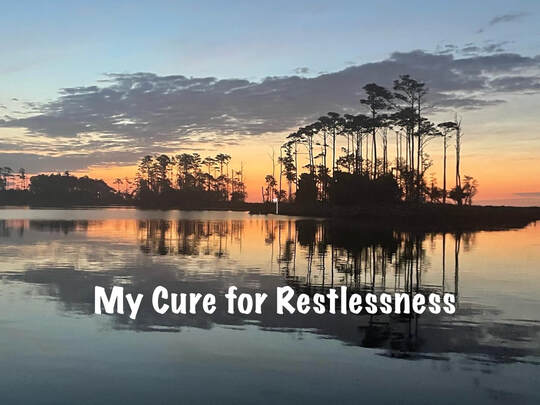

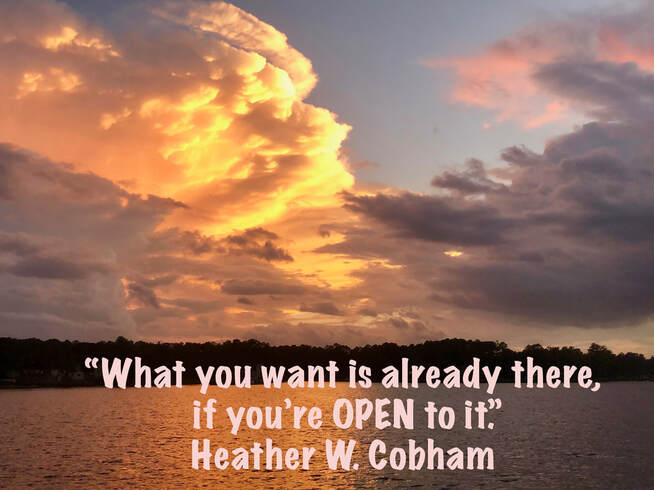
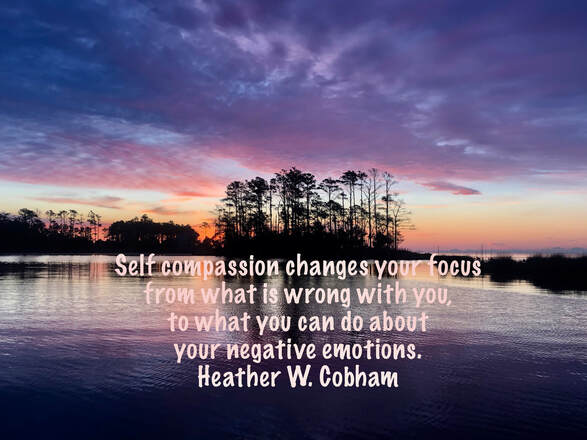

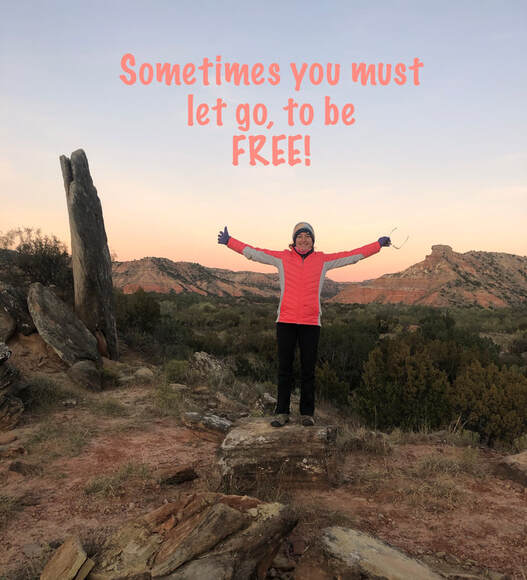

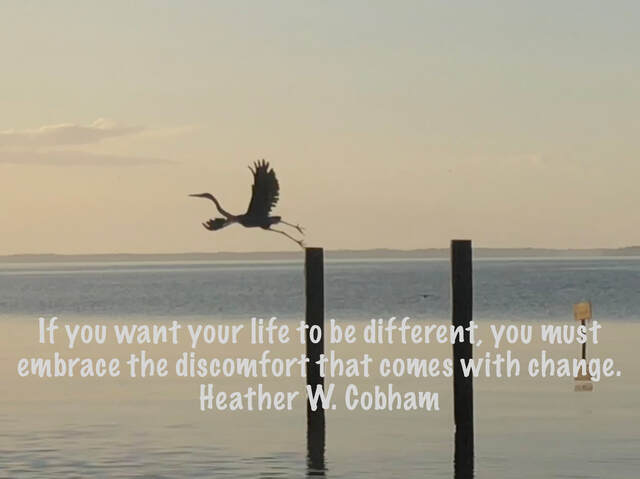

 RSS Feed
RSS Feed